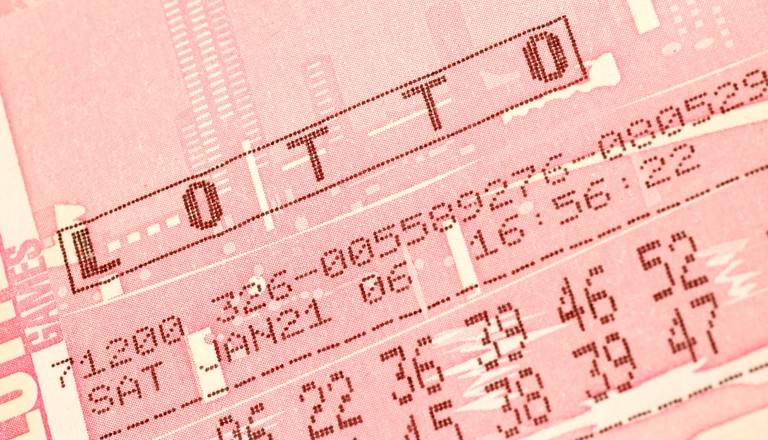
Security features included in the printing of lottery tickets
If you want to play the lottery, then you have to buy a ticket. Your ticket is your only claim to the jackpot, or any other prize for that matter. So to safeguard the integrity of the lottery industry and to protect players from fraud, lottery organizations around the world have implemented advanced security features on their lottery tickets.
Specialised Printing and Watermarks
One of the fundamental security features used in the manufacture of lottery ticket paper is the use of advanced printing techniques such as watermarking. Widely employed in the printing industry, watermarking involves the incorporation of subtle, unique patterns, codes, or words into the paper during the manufacturing process. These watermarks are nearly impossible to reproduce accurately, making it extremely difficult for counterfeiters to create convincing replicas.
Specialized inks and techniques are used that are resistant to tampering and counterfeiting. These inks often include colour-shifting properties, holograms, or UV light features that are easily recognizable by both lottery officials and the ticket purchasers. The combination of watermarking and security printing sets a strong foundation for the overall security of lottery ticket paper.
Another security measure used is that of Bar codes and/or Quick Response (QR) codes that have now become integral components of modern lottery ticket security. These codes are unique to each ticket and contain essential information such as the ticket number, draw date, and other relevant details. Lottery officials can easily verify the authenticity of a ticket by scanning these codes, streamlining the validation process to determine whether a ticket has won a prize or not.
QR codes in particular offer an additional layer of security. Lottery operators can implement dynamic QR codes that change their information periodically. This dynamic feature makes it exceedingly challenging for counterfeiters to replicate tickets, as they would need to keep pace with the changing codes.
To further enhance security, lottery tickets often incorporate tamper-evident features that are designed to reveal any attempts at ticket tampering or alteration. Common examples include special adhesives that leave a visible mark when removed, or intricate patterns that are disrupted if someone tries to manipulate or alter the ticket in some way.
Some lottery jurisdiction use holograms as an additional effective means of preventing counterfeiting. These holograms are often applied to the surface of the lottery ticket, creating a visually striking and difficult-to-replicate image. The holographic elements may include intricate designs, 3D effects, or even dynamic elements that change when viewed from different angles.
Counterfeiters find it exceptionally challenging in trying to reproduce these holographic features accurately. As a result, security holograms serve as a very robust deterrent against fraudulent activities, adding a layer of sophistication to the overall security architecture of lottery tickets.
The Digital Age
In today’s digital age, lottery organizations are increasingly leveraging technology to enhance ticket security. Many lottery operators now offer mobile verification apps that allow players to scan and check their tickets using smartphones. These apps use the device's camera to read and verify the bar code or QR code on the ticket, instantly confirming its authenticity and draw status. This real-time verification process not only adds convenience for players but also acts as an additional layer of security. It enables lottery organizations to communicate directly with players, providing instant validation and ensuring a seamless experience while thwarting potential fraud attempts.
Every lottery ticket is assigned a unique serial number or identifier, a crucial element in the security infrastructure. These numbers are typically printed on the ticket and are essential for tracking and verifying the legitimacy of the ticket. Lottery officials can cross-reference these serial numbers with their database to ensure that each ticket corresponds to a valid and authorized purchase. Additionally, incorporating unique identifiers allows for better traceability in case of any disputes or claims. This transparency contributes to the overall integrity of the lottery system and reinforces the trust players place in the fairness of the draw.
In conclusion, the security features implemented on lottery tickets are a testament to the commitment of lottery organizations worldwide to protect their players and maintain the integrity of the games. From advanced printing techniques and tamper-evident features to the integration of bar codes, QR codes, security holograms, and mobile verification apps, these measures collectively create a robust security framework.
As technology continues to evolve, lottery organizations will likely explore even more sophisticated security solutions to stay ahead of any potential threats. By investing in cutting-edge physical and digital security features, lotteries not only safeguard the financial interests of their participants but also uphold the trust and credibility that form the foundation of the entire lottery industry.
By employing tamper-evident features, lottery organizations can not only deter potential fraud but also provide players with a visible indicator of the ticket's authenticity. This contributes to a sense of confidence and trust among lottery players.
